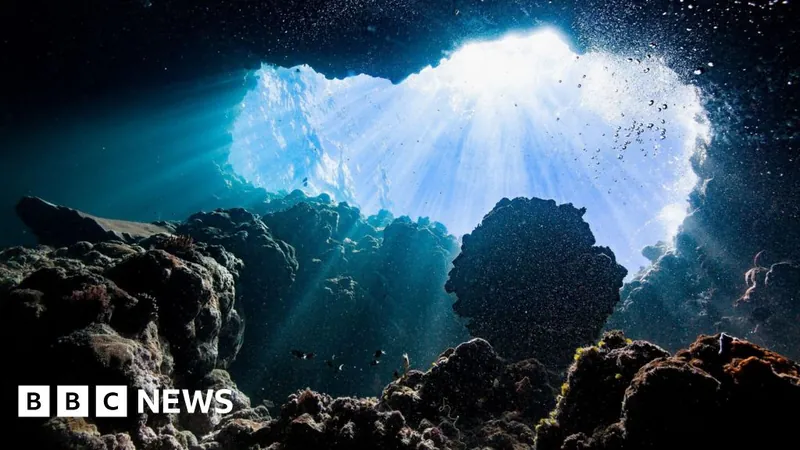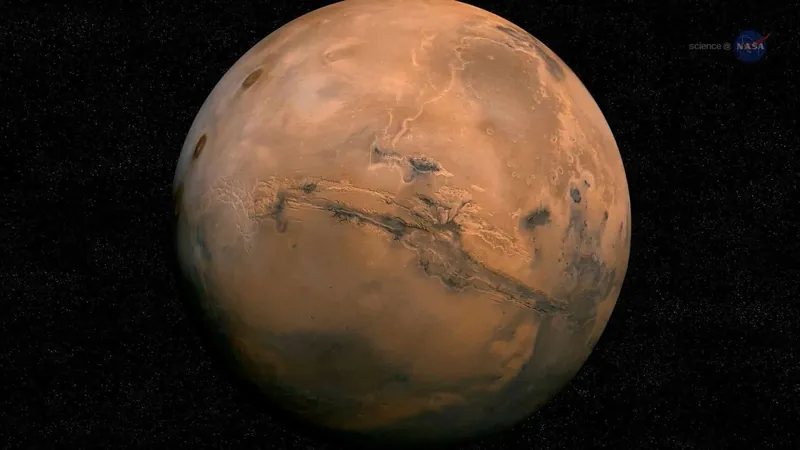
Revolutionary 'Dark Oxygen' Discovery Could Change the Search for Extraterrestrial Life!
2025-01-18
Author: Charlotte
Scientists have recently made a groundbreaking discovery that has implications for life beyond our planet: metallic lumps found on the dark seabed are capable of producing oxygen. This revelation has sparked a mission to explore the deepest parts of Earth's oceans, providing insights that may redefine our understanding of life in the universe.
Historically, it was thought that oxygen could only be generated through photosynthesis in sunlit waters, primarily by plants. However, this new finding suggests that oxygen production may occur in total darkness, leading researchers to believe that similar processes could take place on other celestial bodies, potentially creating habitable environments for life as we know it.
The unexpected discovery has ignited heated debates within the scientific community, with some marine scientists disputing the findings, and corporations involved in deep-sea mining expressing concerns about how this knowledge could affect their operations. As seabed mining companies aim to extract valuable materials from the ocean floor, the implications of oxygen-producing processes in these depths have become a crucial point of contention.
The researchers plan to target sites at depths exceeding 10 kilometers (6.2 miles) using cutting-edge, remotely-operated submersible technology. Professor Sweetman, one of the lead scientists on the project, expressed optimism: “We have instruments that can dive to the ocean's depths. We are confident we will uncover more about this phenomenon.”
In collaboration with NASA, part of the research will focus on whether similar mechanisms for oxygen production could support microscopic life forms in the oceans of other planets and moons in our solar system. “If there’s oxygen,” Prof. Sweetman noted, “there’s potential microbial life that could thrive in such oxygen-rich environments.”
The researchers initially uncovered these oxygen levels during expeditions between Hawaii and Mexico, where sensors deployed nearly 5 kilometers deep detected increased oxygen concentrations. Prof. Sweetman initially dismissed the readings, trained in the belief that oxygen could only originate from photosynthesis. However, after conducting several lab experiments using the metallic nodules collected from the seabed, they confirmed that these nodules were indeed capable of facilitating the electrolysis of seawater, creating oxygen and hydrogen through electrical currents generated by the metals.
The backlash against their findings has been fierce, with critics from both academic and commercial sectors questioning the experimental design and data validity. Prominent among the critics is Michael Clarke from a Canadian deep-sea mining company, who has asserted that the observed oxygen levels were mere artifacts from sample collection equipment, rather than a sign of genuine production. In response, Prof. Sweetman remains steadfast: “We've ruled out that possibility. Our upcoming experiments will provide the definitive proof.”
This scientific controversy is not trivial; it intersects with the urgent global demand for resources as billions are invested in the extraction of metals critical for technology like electric vehicle batteries. With rising interest in seabed mining, over 900 marine scientists from 44 countries have signed a petition urging a moratorium on these activities, highlighting the pressing environmental risks involved.
At a recent press conference, Prof. Sweetman emphasized the importance of understanding deep-sea ecosystems before proceeding: “Before we embark on any mining projects, we must fully comprehend the health and complexity of these environments. It may be wise to pause and reconsider our path as a global society.”
This mission holds the promise of not only unveiling the mysteries of our oceans but also potentially revolutionizing our understanding of life's possibilities beyond Earth. Scientists and environmentalists alike will be closely monitoring the developments in this fascinating research, as it could redefine the criteria for assessing extraterrestrial life.









 Brasil (PT)
Brasil (PT)
 Canada (EN)
Canada (EN)
 Chile (ES)
Chile (ES)
 Česko (CS)
Česko (CS)
 대한민국 (KO)
대한민국 (KO)
 España (ES)
España (ES)
 France (FR)
France (FR)
 Hong Kong (EN)
Hong Kong (EN)
 Italia (IT)
Italia (IT)
 日本 (JA)
日本 (JA)
 Magyarország (HU)
Magyarország (HU)
 Norge (NO)
Norge (NO)
 Polska (PL)
Polska (PL)
 Schweiz (DE)
Schweiz (DE)
 Singapore (EN)
Singapore (EN)
 Sverige (SV)
Sverige (SV)
 Suomi (FI)
Suomi (FI)
 Türkiye (TR)
Türkiye (TR)
 الإمارات العربية المتحدة (AR)
الإمارات العربية المتحدة (AR)